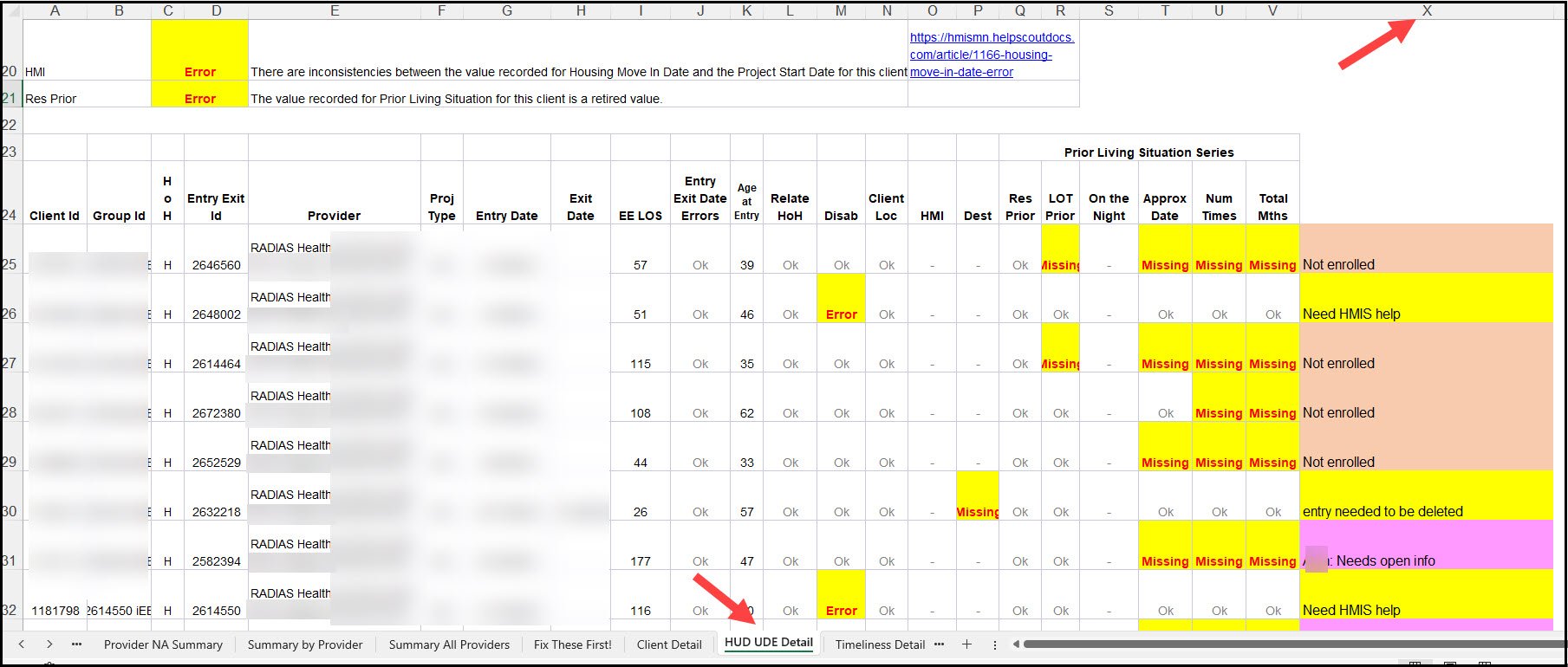Noting Changes and Cleaning Up in QDQ
Every three months agencies run the Quarterly Data Quality (QDQ) report and begin to clean up any data problems. The process might seem a bit daunting at times, but, like any task, it can be broken down into small er tasks. In fact, the QDQ Report is designed to help those running it to see the steps within the larger task. Here is one way to approach data clean up.
Check the Report Information tab. This tab shows you the basic report information. It’s good to double-check the report dates as well as the providers or reporting groups used.
Check the Fix These First! tab. Just as the name indicates, this is a great place to start. Fixing errors here can eliminate errors later in the report. When this tab is clean, re-run the report and you may see errors on other tabs have disappeared.
Look for highlighted data. View these as flags to check. The highlighted areas might be data to fix, but it might also be simply data to confirm. For example, a row might show a missing Housing Move-In Date (HMID) but the agency is still working with the client to secure housing. The data is correct, but the report is highlighting the missing HMID. Similarly, a partial Social Security Number (SSN) might be the best data an agency has at the time of the report, but the report highlights it because it is not a full SSN.
Use the report to make/take notes and note the links to Knowledge Base articles that help fix errors.
Nicole Moore, an HMIS user from Radias Health, uses the QDQ report to make notes for herself and the other staff she works with. Once she has the Fix These First! tab cleaned up, she uses column X on the HUD UDE Detail tab to help clarify where further work might be needed.
Using colors and text, she can identify where work is needed, who should do the work, and even rows that are confusing and might need assistance from the Helpdesk.
Nicole typically runs the report once a week to check if the data need to be cleaned up. She then copies and pastes any notes over from the previous report and checks to see if the rows marked as fixed have disappeared. If there is information that she cannot fix, she will email the case manager directly with the client's HMIS ID number and the information that she is looking for. The case managers either respond with the information or fix it themselves and let Nicole know it is done. This system works well for them since it allows case managers to focus on specific requests for data rather than digging into the full report.
For the actual QDQ submission, she adds notes to the narrative section explaining and data that has caused an error but cannot be fixed yet.
Nicole’s method is one exemplary way of using the QDQ Report to keep data in good order. Quality data plays an important role in the process of assisting individuals and families who are experiencing homelessness. The report is meant to assist agencies and HMIS users. If you have questions about QDQ in general or the report specifically, contact the Helpdesk and we can get you the answers you need.




